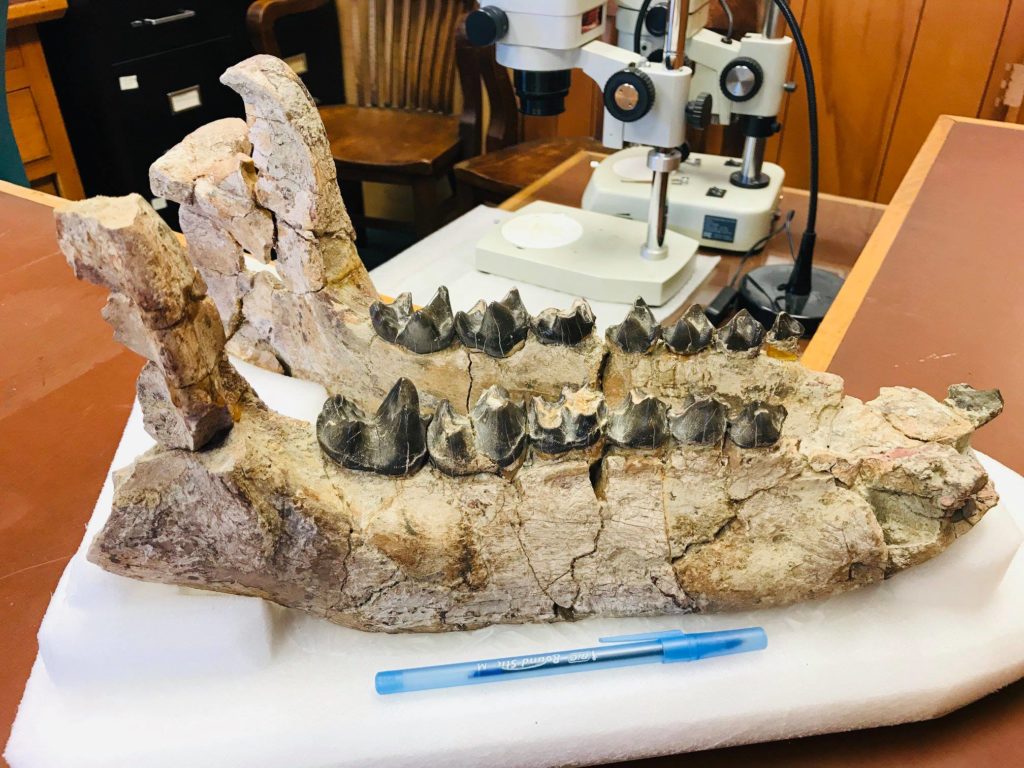
By Matt Borths, Curator of the Duke Lemur Center’s Division of Fossil Primates.
Happy #FossilFriday! Check out the jaw of Coryphodon (meaning “peaked tooth”)! This buffalo-sized behemoth walked beneath the trees that lemur and monkey relatives called home in ancient, jungle-y Wyoming 55 million years ago.
Coryphodon was one of the largest mammals ever up to its time (during the time of the dinosaurs, and for a few million years after their extinction, mammals didn’t get too ambitious size-wise). It’s lineage is extinct today, but Coryphodon and its relatives pioneered the ecological space inherited by elephants, cows, rhinos, camels, deer, pigs, and even giant lemurs.
One of our goals in the Division of Fossil Primates at the Duke Lemur Center is to track ecological roles through time, understanding how big plant eaters and small primates adapted and evolved with their ecosystems through the tumultuous Age of Mammals!

